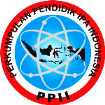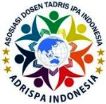Designing of Virtual laboratory on Thermal Expansion
Abstract
This research aims to produce a virtual laboratory that can be used in teaching physics about thermal expansion. This research uses Design Development Research (DDR) with the ADDIE development model. The development results produce virtual laboratory characteristics consisting of two experiments, three independent and control variables, namely the type of material and length of the cylindrical rod, and changes in temperature, as well as the dependent variable, namely temperature. change in cylinder rod length. Data collection is carried out by asking for validator responses to the virtual laboratory that has been developed. The validators consist of five physics lecturers who are experts in learning media and physics concepts. Validation data is processed using the average percentage of expert responses. The virtual laboratory aspect of thermal expansion validation results in quality, appearance and interactivity was 96%, 93% and 92.5% with very valid criteria. The validation results for all aspects conclude that the virtual laboratory on thermal expansion is very valid with a value of 93.8% and can be used for physics learning.
Keywords: virtual laboratory, thermal expansion, physics learning
Full Text:
PDFReferences
Berland, L. K., Schwarz, C. V., Krist, C., Kenyon, L., Lo, A. S., & Reiser, B. J. (2016). Epistemologies in practice: Making scientific practices meaningful for students. Journal of Research in Science Teaching, 53(7), 1082–1112. https://doi.org/10.1002/tea.21257
Bogusevschi, D., Muntean, C. H., & Muntean, G.-M. (2020). Teaching and Learning Physics using 3D Virtual Learning Environment: A Case Study of Combined Virtual Reality and Virtual Laboratory in Secondary School. Journal of Computers in Mathematics and Science Teaching, 39(1), 5–18.
Coccia, M. (2020). The evolution of scientific disciplines in applied sciences: dynamics and empirical properties of experimental physics. Scientometrics, 124(1), 451–487. https://doi.org/10.1007/s11192-020-03464-y
Daineko, Y., Dmitriyev, V., & Ipalakova, M. (2017). Using virtual laboratories in teaching natural sciences: An example of physics courses in university. Computer Applications in Engineering Education, 25(1), 39–47. https://doi.org/10.1002/cae.21777
El Kharki, K., Berrada, K., & Burgos, D. (2021). Design and implementation of a virtual laboratory for physics subjects in moroccan universities. Sustainability (Switzerland), 13(7). https://doi.org/10.3390/su13073711
Erdoğan, Ş., & Bozkurt, E. (2022). The effect of virtual laboratory applications prepared for Geometrical Optics Lesson on students’ achievement levels and attitudes towards Physics. Pegem Egitim ve Ogretim Dergisi, 12(2), 226–234. https://doi.org/10.47750/pegegog.12.02.22
Grodotzki, J., Ortelt, T. R., & Tekkaya, A. E. (2018). Remote and Virtual Labs for Engineering Education 4.0: Achievements of the ELLI project at the TU Dortmund University. 26, 1349–1360. https://doi.org/10.1016/j.promfg.2018.07.126
Hernández-de-Menéndez, M., Vallejo Guevara, A., & Morales-Menendez, R. (2019). Virtual reality laboratories: a review of experiences. International Journal on Interactive Design and Manufacturing, 13(3), 947–966. https://doi.org/10.1007/s12008-019-00558-7
Jannati, E. D., Setiawan, A., Siahaan, P., & Rochman, C. (2018). Virtual laboratory learning media development to improve science literacy skills of mechanical engineering students on basic physics concept of material measurement. Journal of Physics: Conference Series, 1013(1). https://doi.org/10.1088/1742-6596/1013/1/012061
Kapici, H. O., Akcay, H., & de Jong, T. (2019). Using Hands-On and Virtual Laboratories Alone or Together―Which Works Better for Acquiring Knowledge and Skills? Journal of Science Education and Technology, 28(3), 231–250. https://doi.org/10.1007/s10956-018-9762-0
Khachan, J. (2018). Thermal Properties of Matter. In Thermal Properties of Matter. Morgan & Claypool Publishers. https://doi.org/10.1088/978-1-6817-4585-5
Masril, M., Hidayati, H., & Darvina, Y. (2018). The Development of Virtual Laboratory Using ICT for Physics in Senior High School. IOP Conference Series: Materials Science and Engineering, 335(1). https://doi.org/10.1088/1757-899X/335/1/012069
Md Shukri, M. R., & Ariffin, S. A. (2019). The Development Process of Awang Sains 2D Digital Mobile Game. Journal Of ICT In Education, 6, 28–36. https://doi.org/10.37134/jictie.vol6.3.2019
Permana, N. D., Wibowo, F. C., Susilawati, Zarkasih, Z., Bakhtiar, N., Darman, D. R., & Siswanto, S. (2021). Development of a Basic Physics Practicum Guide that is Integrated with Qur’anic Verses for Prospective Natural Science Teachers. AIP Conference Proceedings, 2320. https://doi.org/10.1063/5.0037559
Price, C. B. , & Price-Mohr, R. (2019). Physics Education PhysLab: a 3D virtual physics laboratory of simulated experiments for advanced physics learning. 10.1088/1361-6552/ab0005
Rădulescu, B., Mihalache, A. M., Hrițuc, A., Rădulescu, M., Slătineanu, L., Munteanu, A., Dodun, O., & Nagîț, G. (2022). Thermal Expansion of Plastics Used for 3D Printing. Polymers, 14(15). https://doi.org/10.3390/polym14153061
Rani, S. A., Mundilarto, Warsono, & Dwandaru, W. S. B. (2019). Physics virtual laboratory: An innovative media in 21st century learning. Journal of Physics: Conference Series, 1321(2). https://doi.org/10.1088/1742-6596/1321/2/022026
Rasheed, G., Khan, M., Malik, N., & Akhunzada, A. (2021). Measuring learnability through virtual reality laboratory application: A user study. Sustainability (Switzerland), 13(19). https://doi.org/10.3390/su131910812
Richey, R. C., & Klein, J. D. (2014). Design and Development Research: Methods, Strategies, and Issues.
Rini, E. F. S., & Aldila, F. T. (2023). Practicum Activity: Analysis of Science Process Skills and Students’ Critical Thinking Skills. Integrated Science Education Journal, 4(2), 54–61. https://doi.org/10.37251/isej.v4i2.322
Rosdiana, D., Suherman, A., & Darman, D. R. (2019). Pengembangan Media Pembelajaran Virtual Physics Laboratory (ViPhyLab) Dalam Praktikum Hukum Kirchhoff. Journal of Natural Science and Integration, 2(2), 132-142. http://dx.doi.org/10.24014/jnsi.v2i2.7906
Sanjaya, L. A., Putri, E. A., Wibowo, F. C., Robby, D. K., & D, R. W. P. (2021). Digital Storytelling of Physics (DiSPhy): Belajar Fisika melalui Cerita. Journal of Natural Science and Integration, 4(2), 195-203. http://dx.doi.org/10.24014/jnsi.v4i2.14161
Sapriadil, S., Setiawan, A., Suhandi, A., Malik, A., Safitri, D., Lisdiani, S. A. S., & Hermita, N. (2019). Effect of Higher Order Thinking Virtual Laboratory (HOTVL) in Electric Circuit on Students’ Creative Thinking Skills. Journal of Physics: Conference Series, 1204(1). https://doi.org/10.1088/1742-6596/1204/1/012025
Sari, U., Miraç Pektaş, H., Çelik, H., & Kirindi, T. (2019). The Effects of Virtual and Computer Based Real Laboratory Applications on the Attitude, Motivation and Graphic Skills of University Students. International Journal of Innovation in Science and Mathematics Education, 27(1). https://doi.org/10.30722/IJISME.27.01.001
Šiđanin, P., Plavšić, J., Arsenić, I., & Krmar, M. (2020). Virtual reality (VR) simulation of a nuclear physics laboratory exercise. European Journal of Physics, 41(6). https://doi.org/10.1088/1361-6404/ab9c90
Siswanto, S., Subali, B., & Ellianawati, E. (2023). Integration of Argumentation Activities in Virtual-Inquiry to Improve Argumentation Skills of Prospective Science Teacher in Basic Physics Courses. Journal of Natural Science and Integration, 6(1), 28. https://doi.org/10.24014/jnsi.v6i1.22007
Snow, C. E., & Dibner, K. A. (2016). Science literacy: Concepts, contexts, and consequences. In Science Literacy: Concepts, Contexts, and Consequences. National Academies Press. https://doi.org/10.17226/23595
Vergara, D., Fernández-Arias, P., Extremera, J., Dávila, L. P., & Rubio, M. P. (2022). Educational trends post COVID-19 in engineering: Virtual laboratories. Materials Today: Proceedings, 49, 155–160. https://doi.org/10.1016/j.matpr.2021.07.494
Wagner, S., Maut, C., & Priemer, B. (2021). Thermal expansion of water in the science lab-advantages and disadvantages of different experimental setups. Physics Education, 56(3), 035022. DOI 10.1088/1361-6552/abeac4
Wibowo, F. C., Anggraini, D., & Delina, M. (2022). Jurnal Penelitian dan Pengembangan Pendidikan Fisika. JPPPF, 8(2). https://doi.org/10.21009/1
Wibowo, F. C., Budi, E., Siswoyo, Sunaryo, Raihanati, Sanjaya, L., Darman, D. R., Guntara, Y., Samsudin, A., Suhandi, A., Supriyatman, Nasbey, H., & Coştu, B. (2019). Unveil of virtual physics laboratory (VPL) with battery microscopic simulation (BMS) to promote of problem solving activity. AIP Conference Proceedings, 2169. https://doi.org/10.1063/1.5132650
Wibowo, F. C., Darman, D. R., Prahani, B. K., & Faizin, M. N. (2022). Optics Virtual Laboratory (OVL) Based on Physics Independent Learning (PIL) for Improving Critical Thinking Skill. Journal of Physics: Conference Series, 2377(1). https://doi.org/10.1088/1742-6596/2377/1/012077
Wibowo, F. C., Sanjaya, L. A., Darman, D. R., Basyir, S. N., & Gregersen, A. F. M. (2022). Technology Augmented Reality Integration Hydrometeorology (TARIH) as Media Solution in Disaster Management for Physics Teacher Candidate. Journal of Natural Science and Integration, 5(1), 1. https://doi.org/10.24014/jnsi.v5i1.16641
Wibowo, F. C., Setiawan, A., Alizkan, U., Darman, D. R., & Budi, E. (2019a). Educational technology of virtual physics laboratory (VPL) for the microscopic concept. Universal Journal of Educational Research, 7(12), 2867–2882. https://doi.org/10.13189/ujer.2019.071238
Wibowo, F. C., Setiawan, A., Alizkan, U., Darman, D. R., & Budi, E. (2019b). Educational technology of virtual physics laboratory (VPL) for the microscopic concept. Universal Journal of Educational Research, 7(12), 2867–2882. https://doi.org/10.13189/ujer.2019.071238
Wibowo, F. C., Setiawan, A., Darman, D. R., Rahayu, N. K., & Setyo Budi, A. (2019). Advanced Virtual Physics Laboratory (VPL) of Dynamic Electricity. Article in International Journal of Scientific & Technology Research, 8, 8. www.ijstr.org
Zhuoluo, M. A., Liu, Y., & Zhao, L. (2019). Effect of haptic feedback on a virtual lab about friction. Virtual Reality and Intelligent Hardware, 1(4), 428–434. https://doi.org/10.1016/j.vrih.2019.07.001
DOI: http://dx.doi.org/10.24014/jnsi.v7i1.24804
Refbacks
- There are currently no refbacks.

Journal of Natural Science and Integration
E-ISSN: 2620-5092 P-ISSN: 2620-4967
Published By:
Department of Science Education, Faculty of Education and Teacher Training,
State Islamic University of Sultan Syarif Kasim Riau, Indonesia
Mailing Address:
Jl. H.R Soebrantas Km. 15 No. 155
Kelurahan Simpang Baru
Kecamatan Tuah Madani, Pekanbaru, Riau, Indonesia
Email: jnsi.tadrisipa@uin-suska.ac.id
Indexed By:
Journal of Natural Science and Integration is licensed under a Creative Commons Attribution 4.0 International License.


_-_Copyy2.png)






.jpg)
.png)
.jpg)
.jpg)




